Text

Delosperma & aloe, The Huntington, California
6 notes
·
View notes
Text



The Huntington: vistas inward
4 notes
·
View notes
Text


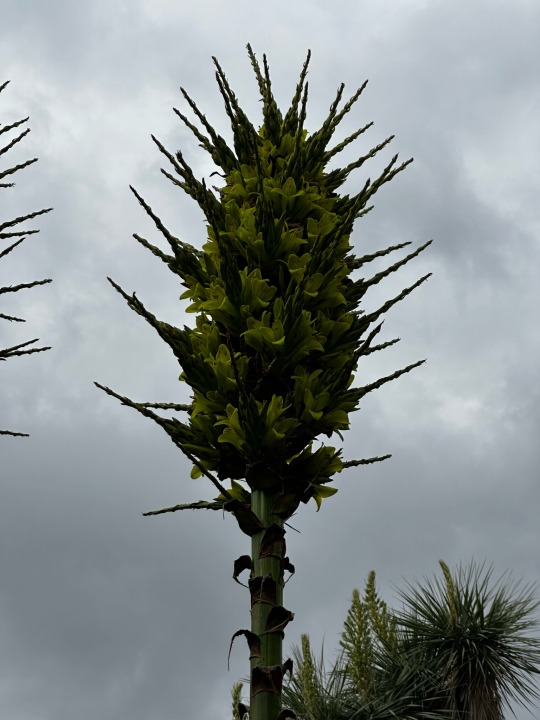
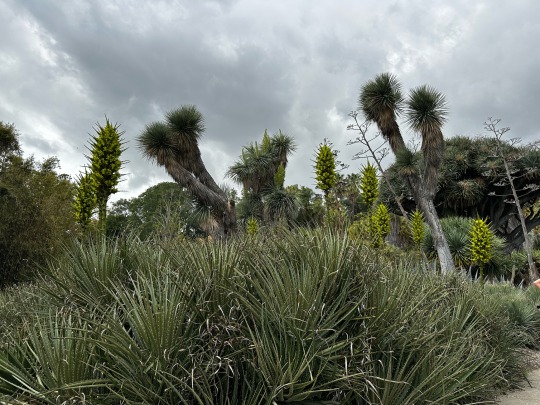

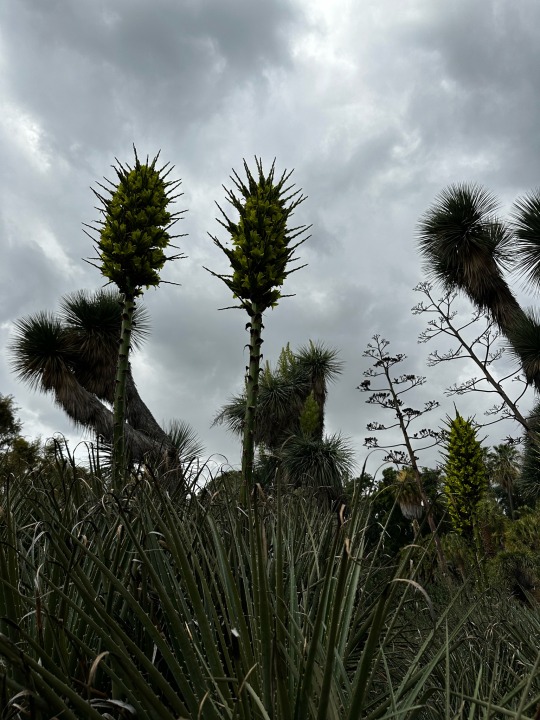

Puya chilensis | Sheep-eating plant
The Huntington, California
An evergreen perennial, it forms large, dense rosettes of grey-green, strap-like leaves edged with hooked spines. The green or yellow flowers are borne on spikes which resemble a medieval mace, and stand up to 6 ft 7 high. Spreading by offsets, Puya chilensis can colonize large areas over time. Growth is slow and plants may take 20 years or more to flower.
The plant is believed to be hazardous to sheep and birds which may become entangled in the spines of the leaves. If the animal dies, the plant may gain nutrients as the animal decomposes nearby, though this has not been confirmed. For this reason, Puya chilensis has earned the nickname "sheep-eating plant".
4 notes
·
View notes
Text

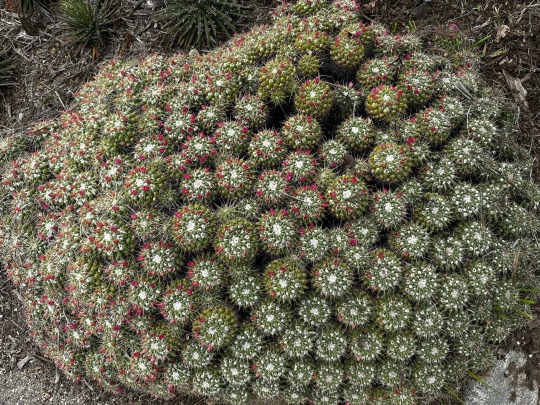
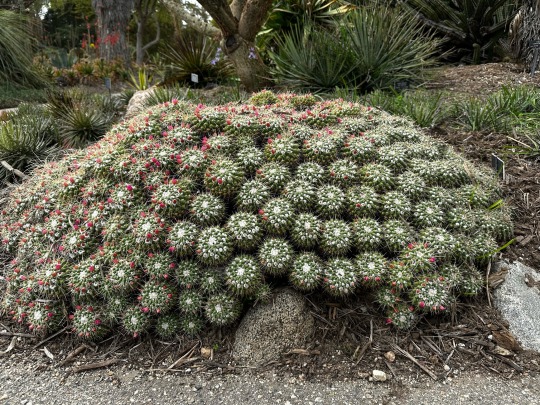
Mammillaria compressa | Mother of hundreds
Mammillaria compressa is native to northern and southern Mexico, and is cultivated as an ornamental plant.
Easily clustering and easily flowered it is one of the largest of all the Mammillarias. Most plants will offset readily, and huge clumps can be produced in a very few years.
(Feet for scale)
13 notes
·
View notes
Text

The Huntington: Aloes, Crassula & Palms
7 notes
·
View notes
Text



Lampranthus saturatus, The Huntington, California
Lampranthus saturatus, a succulent plant in the Aizoaceae family, is a species of Lampranthus, known for its bright, large flowers and long, smooth, succulent leaves, typically found in southern Africa
3 notes
·
View notes
Text

Parodia oxycostata, The Huntington, California
A short cactus with 6-12 ribs and snow white wool at its apex. This plant is a deep, emerald green which nicely offsets its sunny yellow flowers. Its spines are reddish to white and are borne from the fuzzy areoles which dot its stem. This species is native to Brazil and stays under 3.5" in height and diameter.
@ruthbancroftgarden Brian, this ID look correct to you?
2 notes
·
View notes
Text





The Huntington: five vistas
13 notes
·
View notes
Text
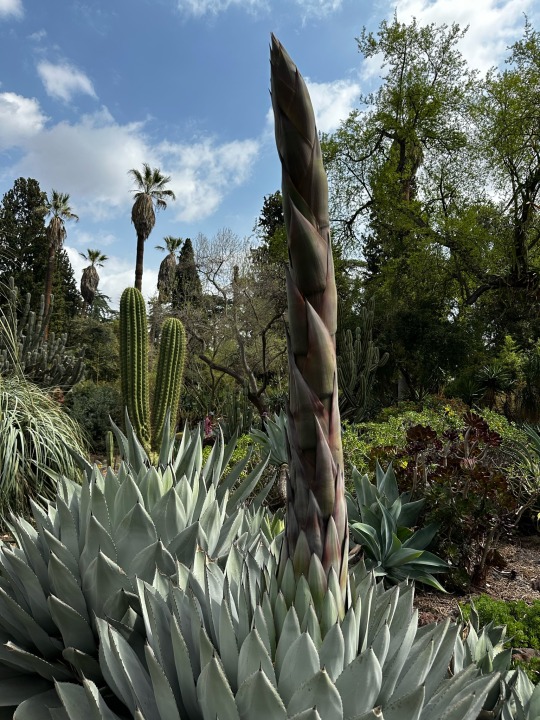
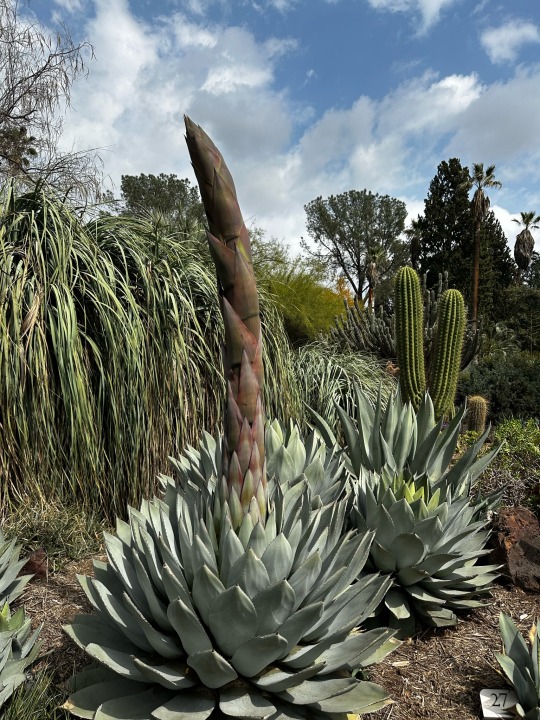
Agave parryi inflorescence | Artichoke agave
The Huntington, California
This emerging inflorescence illustrates perfectly the common name of Agave parryi: artichoke agave.
13 notes
·
View notes
Text

The Huntington: spring vista
Mixed throughout the garden, the Cactus and Succulent collection features a great deal of spring color including Delosperma, Aloes and Crassula.
8 notes
·
View notes
Text
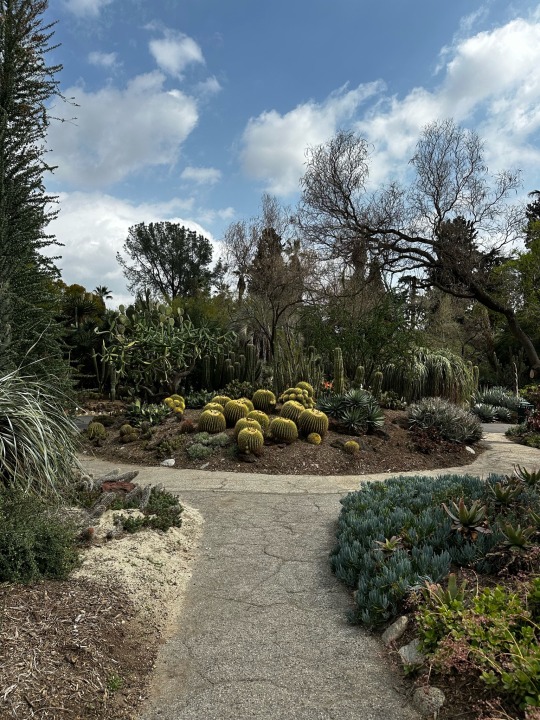
The Huntington: Roundabout
The Cactus and Succulent Garden has many circulating and crosscutting pathways, ensuring no one direct route through the space.
Featured: many of the hundreds of Echinocactus grusonii in the collection.
7 notes
·
View notes
Text
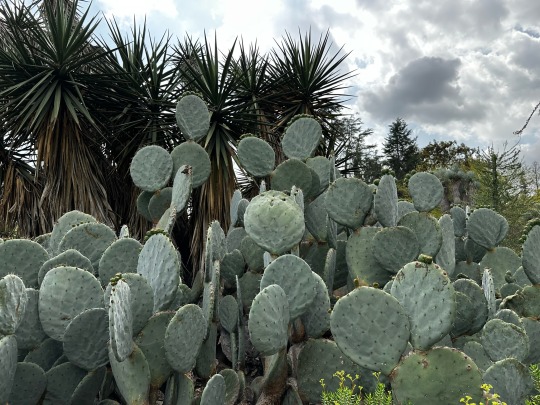

Opuntia robusta | Wheel cactus or nopal tapón
The Huntington, California
A large cactus to 6 to 7 feet tall and as wide with 1 foot or more round flat silvery-gray stem segments (pads) that are jointed together often at nearly perpendicular angles.
This plant is widespread in central and Northern Mexico to within 100 miles of the Arizona and New Mexico borders where it grow from 5,000 to 10,000 feet rocky slopes, open shrublands, woodlands and mixed with other cactus and succulents.
26 notes
·
View notes
Text

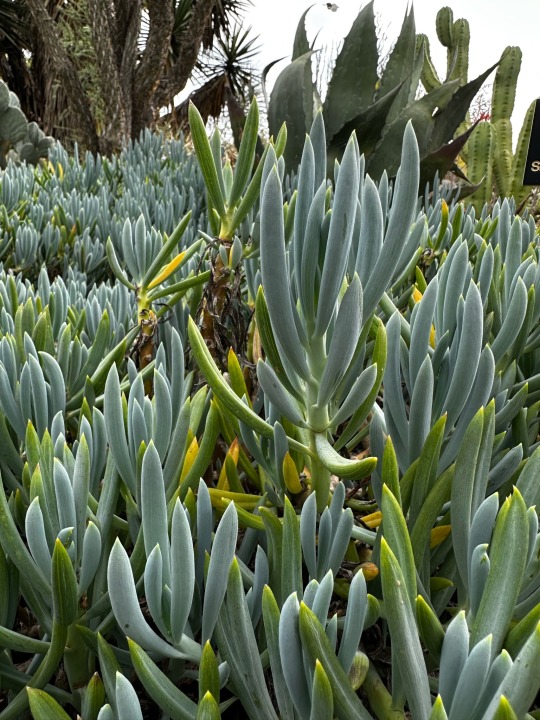
Senecio talinoides ssp. mandraliscae | Blue kleinia
The Huntington, California
#Senecio talinoides ssp. mandraliscae#blue kleinia#succulent#the Huntington#botanic garden#California
3 notes
·
View notes
Text

Euphorbia coerulescens | Blue euphorbia
The Huntington, California
Euphorbia coerulescens is easy to grow in well drained soil with full sun. It forms a small, columnar, leafless shrub with sharp spines on the column edges. Stems are green to bluish green. It blooms with small yellow flowers, called cymes, at the branch tips. E. coerulescens slowly spreads from short underground stems. Fruits are tri-lobed and reddish in color.
The milky sap of this plant can be irritating to some people, especially be careful to keep it away from one’s face and eyes. It is used for animal fodder when cut into sections and allowed to dry. Avoid very windy areas as stems bump into each other causing scaring.
9 notes
·
View notes
Text
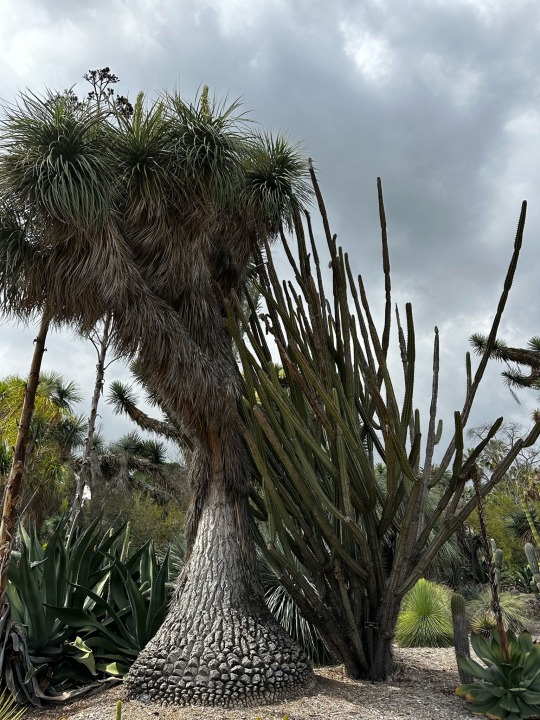
Beaucarnea recurvata (Ponytail palm) & Stenocereus
The Huntington, California
#Beaucarnea recurvata#Stenocereus#ponytail palm#cactus#succulent#the Huntington#botanic garden#California
0 notes
Text



Agave parryi var. truncata | Parry’s agave
The Huntington, California
Agave parryi 'Truncata' is referred to as the Gentry form or, commonly as the artichoke agave. They will bloom when mature (10-15 years old), from a single central stalk that grows as tall as 5m high, which produces a spike of yellow flowers at the tip.
As a cultivar of Agave parryi, the exact origin of the 'Truncata' Gentry form is unknown, but the plant was first collected by American botanist Howard Scott Gentry in 1951, in an oak-juniper woodland in the Sierra Papanton, Durango (near the Zacatecas border).
#agave parryi var. truncata#parry’s agave#gentry agave#artichoke agave#the Huntington#botanic garden#California
15 notes
·
View notes
Text


Stenocereus, The Huntington, CA
13 notes
·
View notes